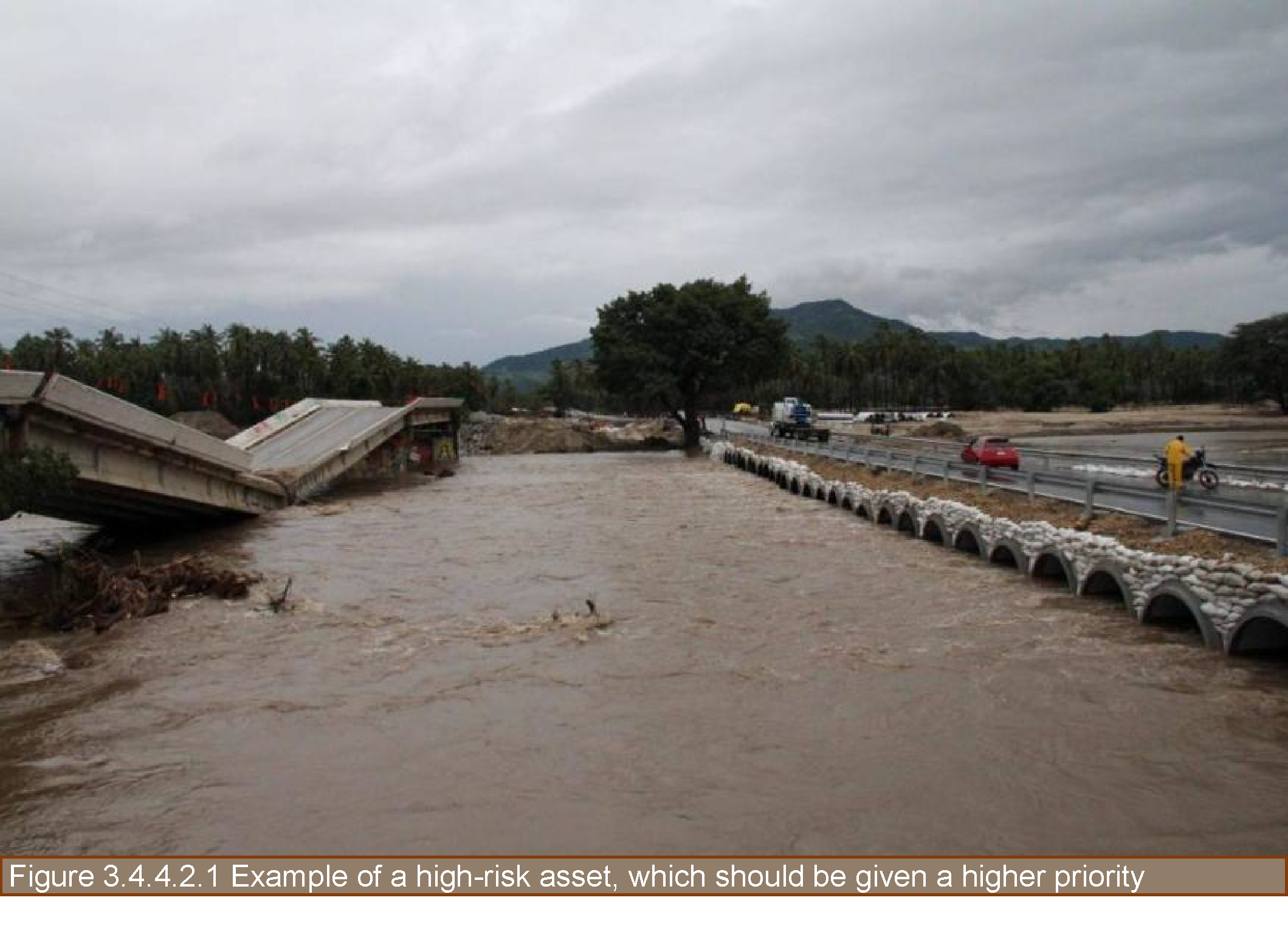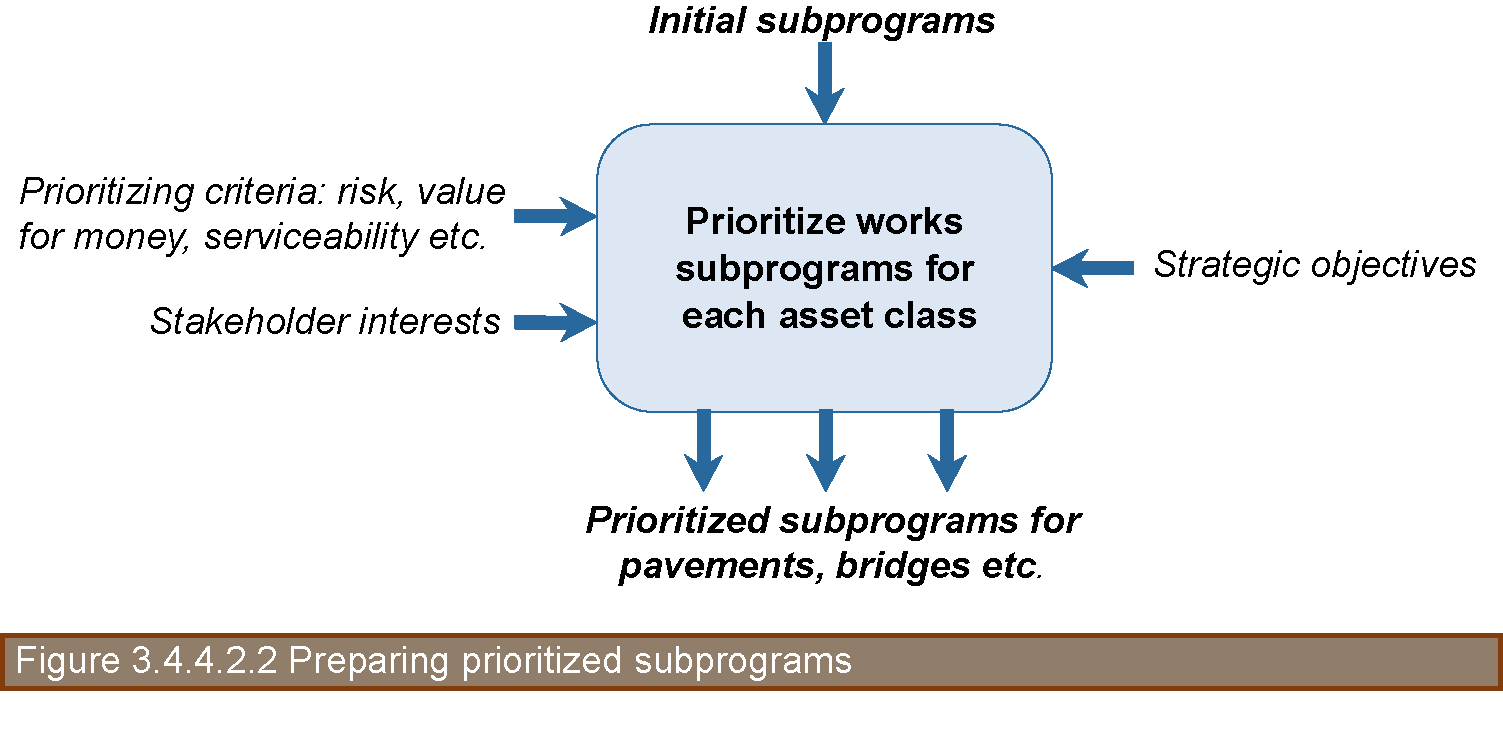
Asset Management Manual
A guide for practitioners!

Asset Management Manual
A guide for practitioners!
Prioritization is basically a method of arranging proposals on new lists that indicate which projects are to be funded first (Austroads 2009). Each new list corresponds to a prioritized subprogram per asset class. The prioritization process is built upon a set of criteria involving aspects such as physical condition, safety, risk, and economic feasibility.
The initial works program usually includes assets whose performance has fallen below specified standards in terms of condition or safety measures. It may also comprise assets subject to high levels of risk, such as those located in areas of extreme weather conditions as well as those attracting the interest of stakeholders for other reasons (e.g., political or socioeconomic).
Because available budgets will in most cases be insufficient to address all needs, safety-critical assets or those having the highest level of risk (Figure 3.4.4.2.1) will normally be put at the top of the list.

Candidate projects should also be prioritized depending on their lifecycle return on investment to ensure that value for money is achieved, particularly in the case of assets such as pavements, structures, or lighting (UKRLG and HMEP 2013). Again, road management systems usually help performing this task.
Modern prioritization procedures call for applying a multi-criteria approach in which factors such as sustainability, stakeholder requirements, and social benefits are combined with serviceability, safety, and value for money. This approach requires assigning appropriate weights to each factor depending on the institutional vision.
It should be noted that agencies at the proficient maturity level might not be in a position to apply the multi-criteria approach described above, while agencies at the basic level usually only use serviceability and economic return as criteria for prioritizing.
Inputs and outputs of the prioritization stage are illustrated in Figure 3.4.4.2.2.
